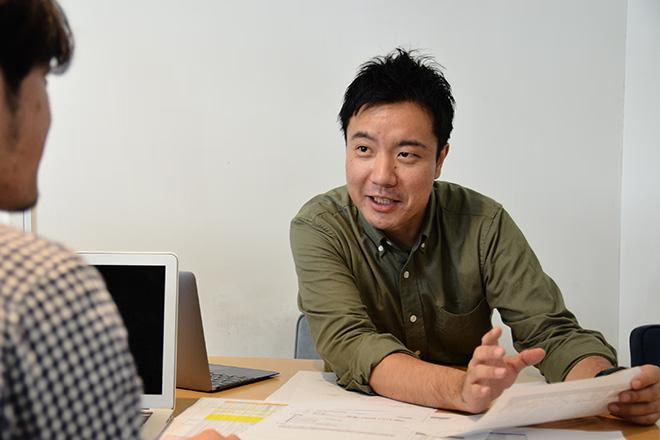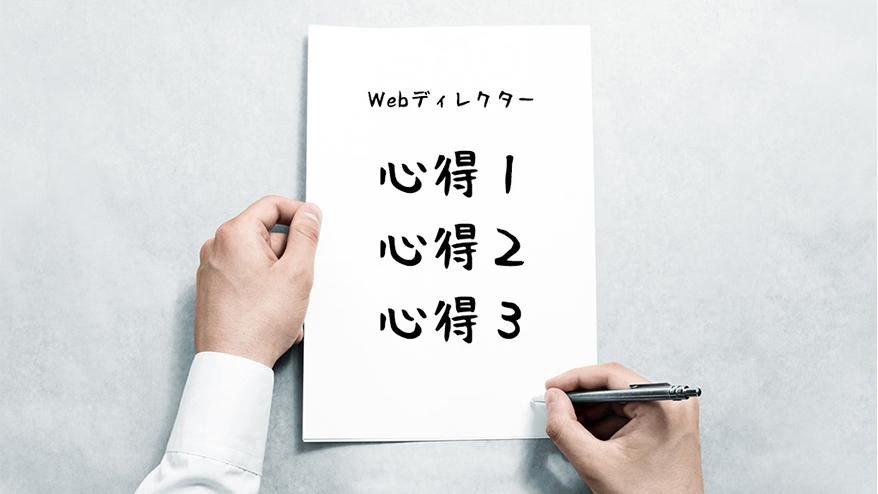こんにちは、ディレクターの大藪です。
プロジェクトを進める上で欠かせない「ディレクター」ですが、実際はどんなことをしているの?と聞かれることが多いのも事実です。一般的にディレクターの役割としては、以下のようなものが挙げられます。
- クライアント、社内メンバーと打ち合わせ
- スケジュール管理
- 課題管理
- 進行管理
- 品質管理
- 制作メンバーへの指示出し
これらの業務については、このコーナーでも様々な切り口でご紹介してきましたが、個人的には「どんな業務をしているのか」ということだけでなく、「どんな気持ちで向き合っているのか」ということも大事なんじゃないかなと思っています。
そこで今回は、私がディレクターとして仕事をする上で、大切にしている「心得」のようなものをご紹介してみたいと思います。
心得1. 自ら手を動かすことはNG
基本的に、ディレクターはプロジェクトを進行管理する立場なので、デザインやコーディングのような実制作を行うことはありません。しかし、元々制作をやっていた人がディレクターになった場合、つい、自ら手を動かしてしまいそうになることがあります。
例えば、デザインのケアレスミスやコーディングのちょっとしたバグなどが起きた場合、「制作担当者に指示を出すのも手間だし、急ぎだし、自分で対応してしまおう…」と思ってしまいがちですが、これはディレクターとしてNGだと私は考えています。
過去の経験談ですが、私も自分がやった方が早いと思って、自らあれこれ対応してしまったことで深夜残業や休日出勤が続き、その結果、時間に余裕がなくなって本来ディレクターが行うべき役割がおろそかになってしまったことがありました。
案件の道筋を立てるディレクターに余裕がなくなると、制作メンバーも困ってしまいます。ちょっとした修正や変更だから自分がやる…ではなく、効率良く制作担当者に対応してもらう方法を考える、ミスなどを防ぐためにはどうすればよいかを考えるなど、今後の進め方を考えていくことがディレクターの役割です。
「何でも屋」になるのではなく、ディレクターは常に冷静に、何が起きても対処する方法を考えられる余裕を持つことが重要だと思っています。
心得2. 自分が制作しているつもりで
先ほど、ディレクターは自ら手を動かしてはいけないとお話ししましたが、私自身は、「手は動かさないけれど、自分が全て制作しているつもり」でプロジェクトを進めるようにしています。
プロジェクトには、スタートから終わりまでいくつもの工程があり、前の工程の内容は次の工程の制作に繋がっています。工程毎の経緯や対応方法を把握していないと、次の制作者への適切な指示出しや正しい判断ができなくなってしまいます。
もし、想定どおりに進まなかった場合でも、「自分が作っているつもり」で状況を把握していれば、工程毎にどういった影響が出て、どうすればリカバリーすることが出来るのか、確実に対応することができます。併せて、制作担当者が無駄な作業を行わずにすむよう、制作の下準備をディレクターが先回りして行うなど、制作者が最大限の力を発揮できるような環境づくりも心がけています。
また、ディレクターは単独でクライアントと打合せを行うことがありますが、その時には「制作側の代表」として対応しなければいけません。何か提案をする際にも、なぜこの案が必要なのか、制作側の意図を理解した上でちゃんと説明できるように心がけています。
プロジェクトを円滑に進めるため、クライアントに納得してもらうためにも、ディレクターが責任を持って全て制作します というくらいの気持ちが必要だと思っています。

心得3. 誰よりも情熱を持って
最後の心得は「誰よりも情熱を持つこと」です。
プロジェクトが始まると、クライアントも制作メンバーもみんな「良いものを作りたい!」という同じ気持ちでゴールに向かっていきます。そのなかでも、プロジェクトの全期間を通して、誰よりもディレクター本人が情熱を持ち続けることが大切だと思っています。
制作側の先頭に立つディレクターが黙っていると、誰も動いてくれません。
どうしたらクライアントが望むものを作れるか?もっと良い案はないか?まず、ディレクターが動き出すことで、プロジェクトは進みます。
時には、クライアント以上に前のめりになることも必要です。例えば、打ち合わせの場でクライアントが独り言のようにつぶやいたことにも「それって何ですか?」と耳を傾けて、望んでいることや疑問など、細かいことでも拾っていく。「クライアントのサイト=自分のサイト」だと思うくらいの情熱を持って、プロジェクトに臨んでいく。その意気込みが伝わることで、クライアントもより積極的になり、結果として、期待以上の成果を出すことにも繋がるのだと思います。
プロジェクトにエンジンをかけるのは、ディレクターの情熱です!
まとめ
今回の記事をきっかけに、自分なりのディレクターとしての心得のようなものを、改めて確認することができました。以前の自分は、スケジュールや課題管理表の作成など、作業的なことに大半の時間を使っていましたが、最近は「良いものを作るにはどうしたらよいか」「お客さんが求めているものは何か」など、考えている時間のほうが増えている気がします。
それは今までの経験を通して、本当の意味でクライアントや制作メンバーと向き合うこと(目や耳、心を使って考えること)の大切さに気づいたからかもしれません。デザイナーやコーダーと違って、自分で手で動かして作るものは少ないですが、何ヶ月も心を込めて進めてきたサイトが出来上がった時は本当にうれしいものです。これからも「冷静さ」と「情熱」を大切に、ディレクターとしてプロジェクトを引っ張っていきたいと思います。

